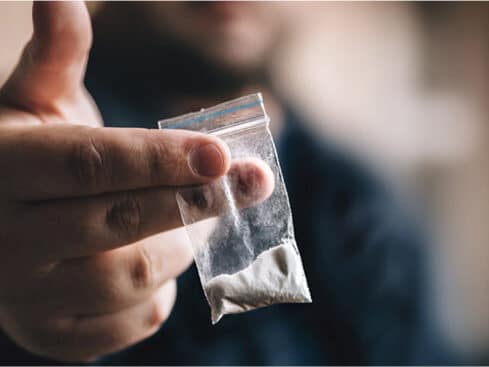Does Cocaine Have a Distinct Smell?
Yes, cocaine has a distinct and recognizable smell. Namely, powder cocaine can smell bitter or have a chemical-like smell like vinegar or gas.
| Cocaine type | Smell |
|---|---|
| Powder cocaine | Bitter, vinegar, or chemical-like |
| Crack cocaine | Burnt rubber or plastic |
| Freebase cocaine | Chemicals or burnt rubber |
| Liquid or injectable cocaine | Similar to powdered cocaine though less potent |
However, the smell may vary depending on the type of cocaine. Pure cocaine may smell floral, but pure cocaine is almost never found on the street. Dealers cut cocaine powder with other contaminants in order to increase profits. As such, these additives can affect cocaine’s smell significantly.
Crack cocaine on its own as well as crack cocaine smoke may have a noticeable scent as well—people have described crack cocaine smell like burnt plastic.
Need support to overcome cocaine addiction? We’re here to help
Additives Affect the Scent of Cocaine
The cocaine scent may differ depending on these additives:
Novocain
Laundry detergent
Benzocaine
Caffeine
Creatine
Boric acid
LSD
PCP
Cornstarch
Sugar
Baking soda
Talcum powder
Cutting cocaine with additives can make it smell very harsh, similar to bleach or sulfuric acid.
What Does Cocaine Smell Like?
What do drugs smell like? Cocaine is often described as having a distinct, bitter chemical smell. Because cocaine is often cut with other substances, its smell may also be slightly shifted depending on the substance used.
Different forms of cocaine are often described as smelling somewhat differently, including powder cocaine, crack cocaine, freebase cocaine and liquid cocaine.
For example, flour and baking powder are two common cutting agents used to make cocaine more profitable. They might theoretically subtly change the smell of the drug, although it’s unlikely they would completely override the underlying smell of the cocaine.
Struggling with Cocaine Addiction? Treatment starts today
Powder Cocaine
Powder cocaine is the “standard” form of cocaine, often having a bitter or harsh smell that may resemble vinegar or other chemicals. Most people would find this smell fairly unpleasant.
Crack Cocaine
The processing involved in making crack cocaine, as well as the introduction of impurities, can alter the smell of the drug, with it anecdotally being described as smelling like “burnt plastic or rubber.”
Freebase Cocaine
Freebase cocaine is created by removing the hydrochloride from the powdered cocaine version. In order to make freebase cocaine, dealers add ether or ammonia to it. Consequentially, it tends to smell like chemicals or burnt rubber.
Liquid Cocaine
Liquid or injectable cocaine can either be powdered cocaine or crack cocaine prepared into a solution, so it can be injected. It is generally going to smell more or less like it did in its original form, although probably less potent. Injectable or liquid cocaine doesn’t have its own unique smell.


Common Slang Words & Street Names for Crack Cocaine
Can Drug Paraphernalia Affect Smell?
Drug paraphernalia isn’t likely to impact the smell of cocaine much, although the tools used to smoke crack or freebase cocaine may develop a burning smell to them, especially if the materials they’re made of are cheaper or a user doesn’t ever clean them.
Paraphernalia used for cocaine includes roll-up bills or papers used to snort the drug, mirrors that are often used to line up cocaine before snorting it, cards or razor blades that are used to line up the cocaine, and plastic baggies that hold the drug prior to use. For smoking crack, paraphernalia includes spoons, lighters, and tin foil.
- Cocaine. FRANK.
- Drug Paraphernalia Fast Facts. U.S. Department of Justice.
- The Treatment of Cocaine Use Disorder. (October 2019). ScienceAdvances.












